Key takeaways:
- Print bed adhesion is crucial for successful 3D printing, impacting print quality and preventing failures.
- Common challenges include bed leveling issues, surface cleanliness, and inconsistencies with first layer adhesion.
- Different surface types, like glass and PEI, significantly influence adhesion, and experimenting with them can yield better results.
- Techniques such as bed leveling, managing temperature, and using adhesion aids like glue sticks can improve print adhesion.
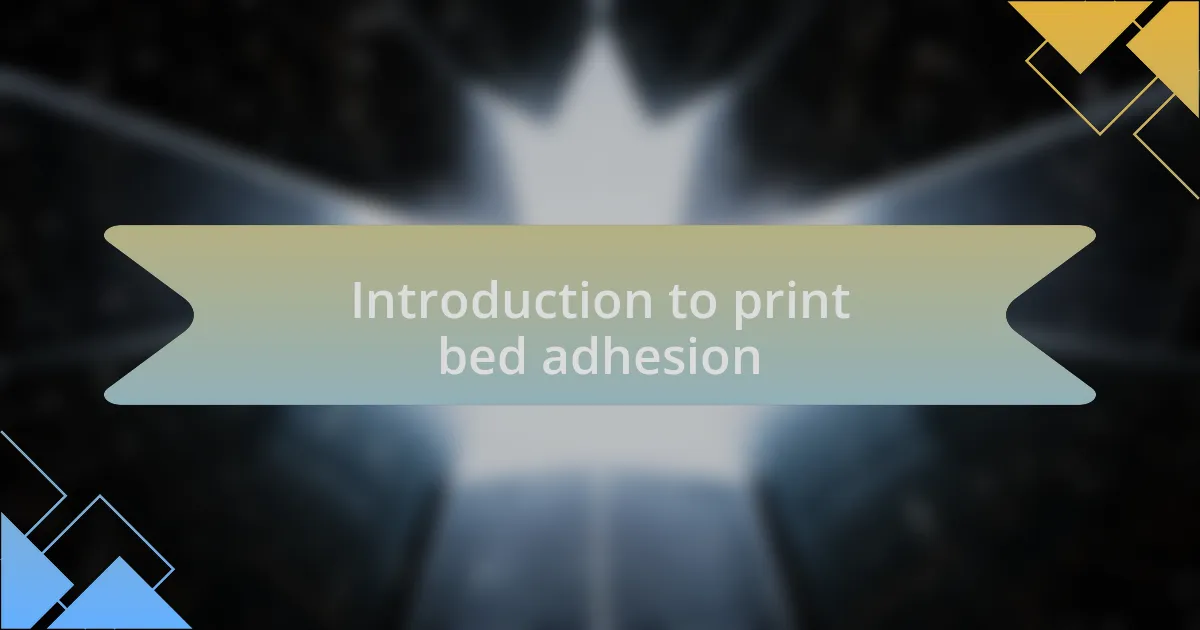
Introduction to print bed adhesion
Print bed adhesion is a fundamental aspect of 3D printing that can make or break your project. I’ve had my share of frustrating prints that failed simply because the model didn’t stick to the bed, leading to ruined material and wasted time. Have you ever watched a print begin to warp or lift, and felt that sinking feeling in your stomach?
Understanding the science behind adhesion can significantly enhance your printing experience. I remember one particular project where I tried different bed surfaces, experimenting with everything from glass to specialized adhesives. Each material taught me more about how temperature and surface texture play critical roles in anchoring the print.
Not only does a well-adhered print lead to better quality, but it can also boost your confidence as a maker. Have you ever completed a complex model only to have it break during removal? I certainly learned the hard way how crucial it is to find the right balance between adhesion and easy release. Each successful print not only builds skills but also deepens the joy of creation.
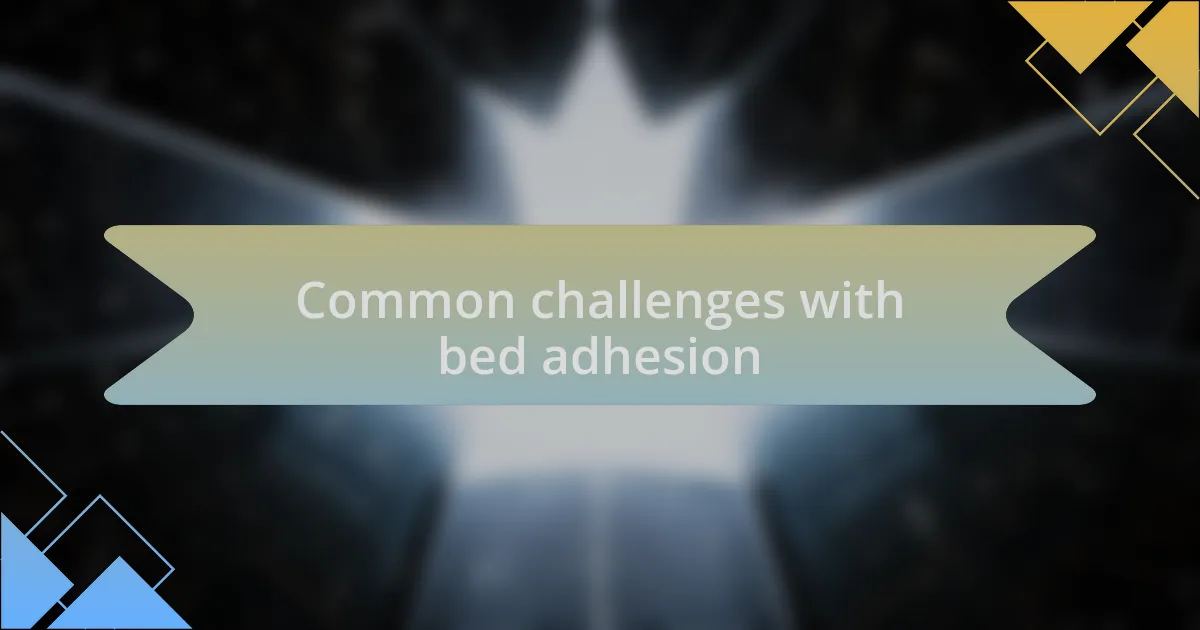
Common challenges with bed adhesion
Print bed adhesion can be perplexing, as different materials respond uniquely to various environmental factors. I remember one time when I was working with PLA and thought I had everything set just right, yet my print decided to lift halfway through. It’s moments like these that really test your patience and problem-solving skills, making you wonder if you’ve overlooked something simple.
One common challenge I’ve faced is the inconsistency in first layers. Your slicer may be tuned perfectly, but if the bed isn’t leveled just right or if there are fluctuations in temperature, everything can go haywire. Have you ever felt that frustration when the first layer just isn’t adhering as it should? I certainly have, and it’s often those little adjustments that make a world of difference.
Another issue that arises frequently is the residue left on the print bed from previous jobs. Once, I neglected to clean the bed thoroughly after a print with a particularly sticky filament. The next attempt was a disaster, as nothing would stick. It goes to show that maintaining a clean workspace isn’t just a good habit; it can be vital for achieving successful prints.
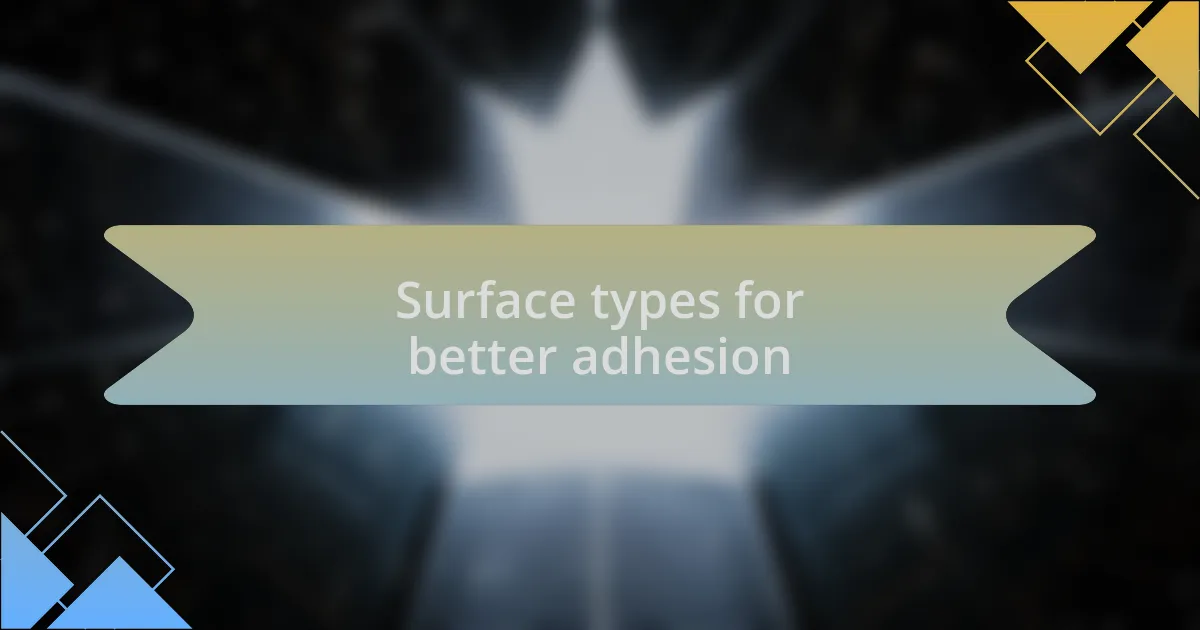
Surface types for better adhesion
When it comes to achieving better adhesion, the choice of surface type can significantly influence your results. I once experimented with a glass bed, and I was pleasantly surprised by how it provided a smooth finish while maintaining excellent adhesion, especially with PLA. There’s something gratifying about watching your print stick so firmly that you almost wish it would continue forever, but I learned the hard way that the right technique and surface preparation are key.
I’ve also had success with PEI (polyetherimide) surfaces, which are famed for their fantastic grip. The first time I used a PEI sheet, I was just starting out and underestimated its power. My prints practically hugged the surface, but I had to readjust my approach to removing them. Have you ever had a print that was so well-attached you thought you might break it? Those moments are definitely bittersweet, even if they make you appreciate the bonding strength of your materials!
On the other hand, textured surfaces can be a game-changer too. When I switched to a textured print bed, I noticed that certain filaments, like PETG, really thrived on it. There’s something about the texture that allows for a rougher grip, making it an exciting option to explore. If you haven’t tried it yet, I encourage you to give a textured surface a shot—you might be amazed at the difference it can make in your projects.
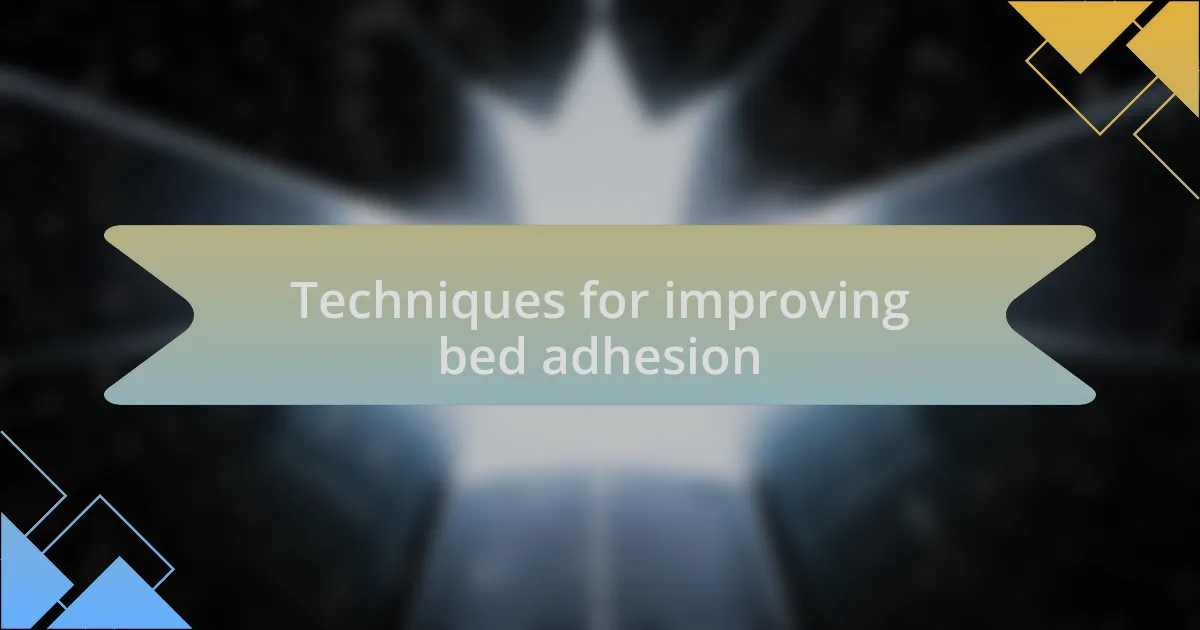
Techniques for improving bed adhesion
One effective technique I’ve learned is to properly level the print bed before each session. The first time I overlooked this step, I ended up with an entire print failing midway, which was incredibly frustrating. Have you ever felt that sinking feeling when you realize your careful setup was for nothing? A well-leveled bed ensures uniform distance between the nozzle and the surface, creating that crucial first layer adhesion that can make or break your print.
Temperature plays a vital role in adhesion too. I remember experimenting with varying bed temperatures and found that a heated bed significantly improved adherence with materials like ABS. It was almost like a warm hug for the filament, helping it stick better and reducing warping. Do you ever find yourself adjusting the bed temperature mid-print, just hoping for that sweet spot? Trust me, it can make a noticeable difference in print quality and success rates.
Another technique I frequently recommend is applying adhesion aids, like glue sticks or hairspray. When I first used a glue stick on my print bed, it felt like I was rediscovering an old trick that worked wonders. The ease of applying it and the solid grip it provided left me wondering why I hadn’t tried it sooner. Have you explored these simple solutions? They can be incredibly effective, allowing your prints to stick securely while also ensuring easy removal post-printing.
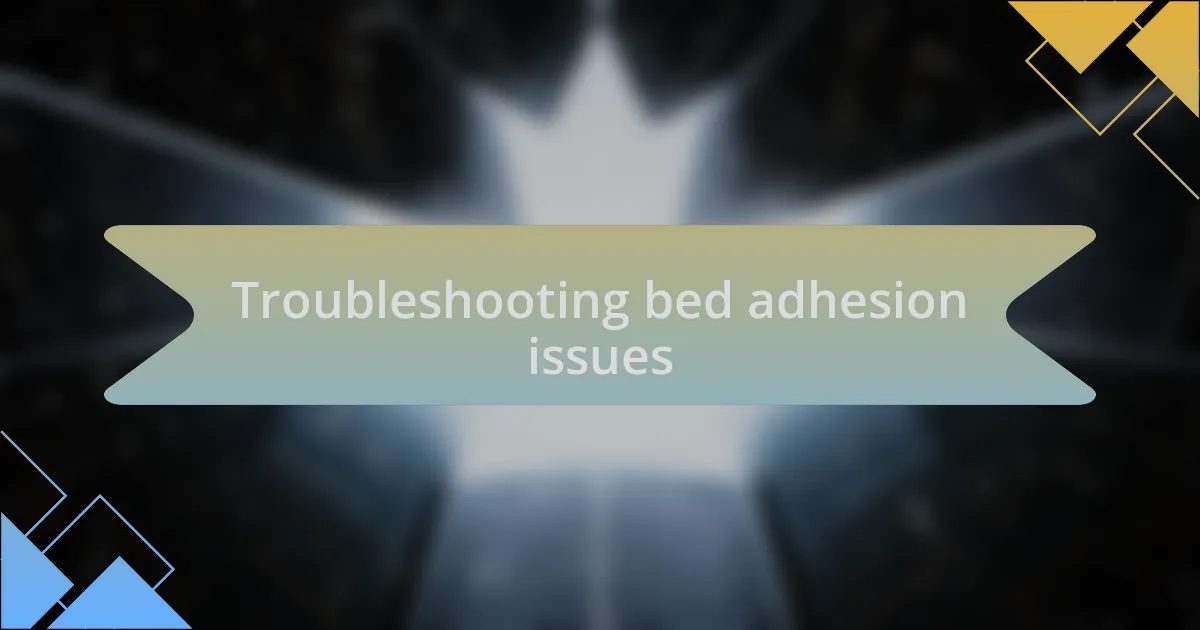
Troubleshooting bed adhesion issues
I’ve encountered my fair share of bed adhesion issues, and trust me, they can be a real headache. One time, I was in the zone, ready to print a complex design, only for it to lift off the bed after just a few layers. I had to take a deep breath and ask myself, “What went wrong here?” I started checking for surface contaminants like dust or residue; even the smallest speck can disrupt adhesion.
Another common issue I’ve run into is inconsistent bed materials. In my early days, I switched from glass to a textured surface, thinking it would improve adhesion. Instead, I faced more warping and failed prints. Have you ever experienced the unintended consequences of a change that seemed right? I realize now that evaluating how the material interacts with my chosen filament can save me a lot of frustration down the line.
Lastly, let’s not forget about the importance of first layer speed. When I first adjusted my slicer settings to slow down the first layer, I saw an immediate improvement. It allowed the filament to settle into place rather than just being laid down hastily. Have you considered experimenting with this aspect? Sometimes, the tiniest tweaks can lead to more successful prints and potentially transform your overall experience.